Hibiscus flower coloring pages provide a simple and enjoyable way to explore creativity. They feature designs ranging from basic outlines to more detailed patterns, suitable for all ages and skill levels. These pages offer a relaxing activity that can brighten a person’s day.
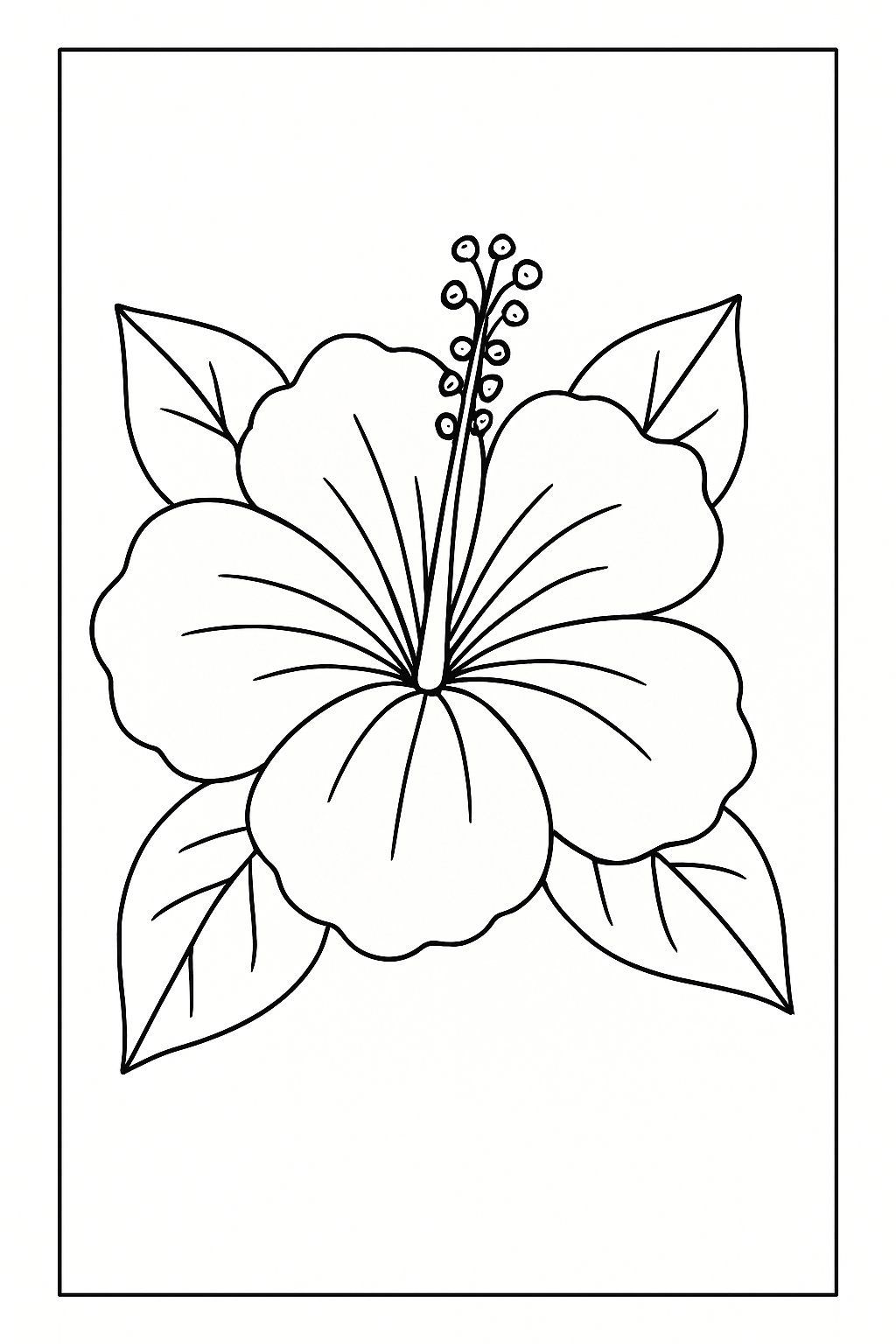
They allow people to engage with the beauty of hibiscus flowers through coloring, making it easy to unwind and express artistic ideas. Coloring these tropical blooms helps connect with nature in a calm and focused way without needing special tools or skills.
1) Simple Hibiscus Flower Outline
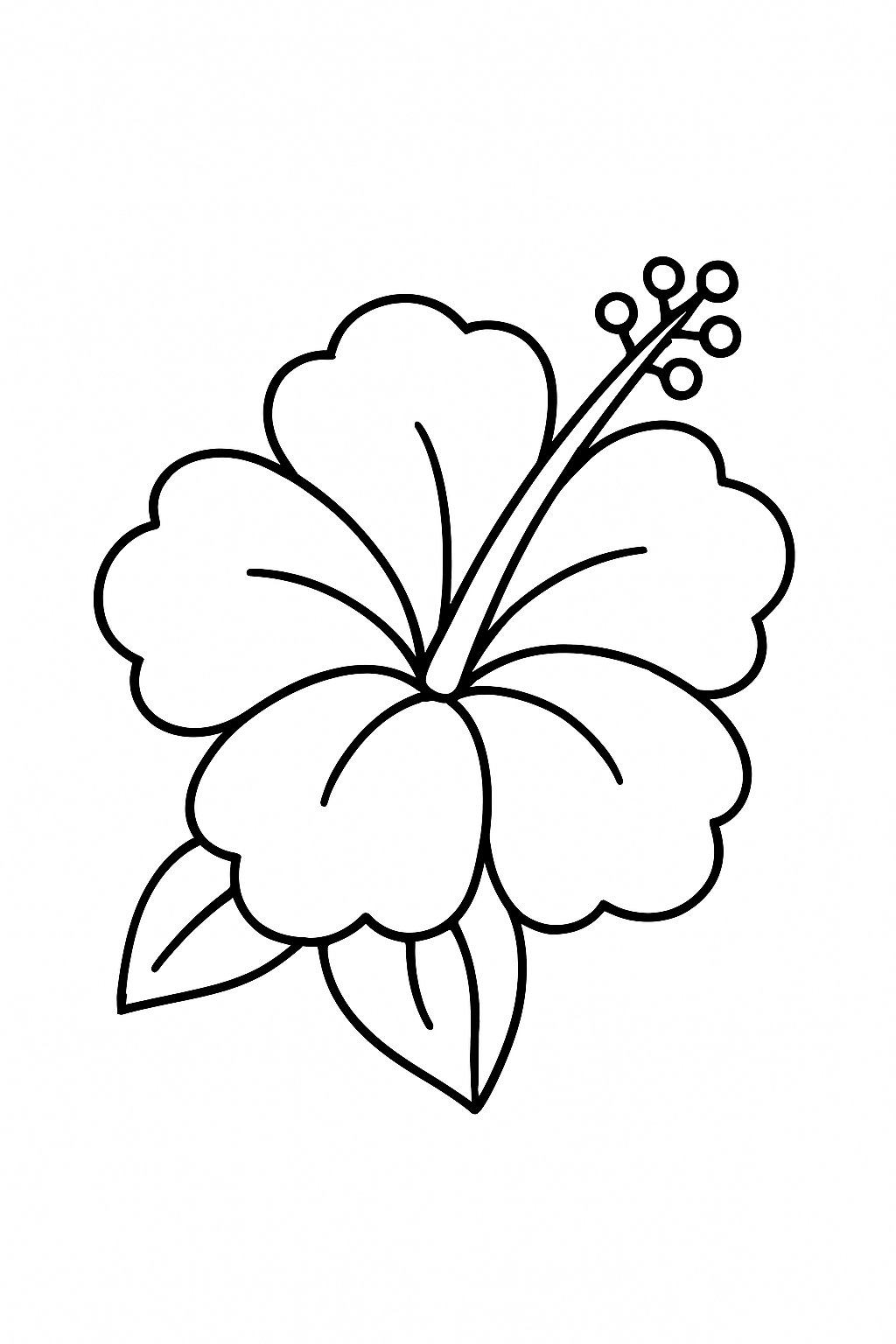
Simple hibiscus flower outlines are basic drawings that show the main shapes and lines of the flower. These outlines usually include the petals, pistil, and leaves, but with minimal detail. They are easy to recognize because of the hibiscus’s large petals and long pistil.
These outlines are useful for beginners or young children. They provide a clear shape to color inside without much complexity. This helps users focus on learning the hibiscus form and practicing coloring skills.
Simple hibiscus outlines are also popular for school projects and art practice. They allow people to experiment with colors like red, pink, or yellow. These pages are often available as free printable PDFs, making them easy to use at home or in classrooms.
2) Realistic Hibiscus Petal Detail
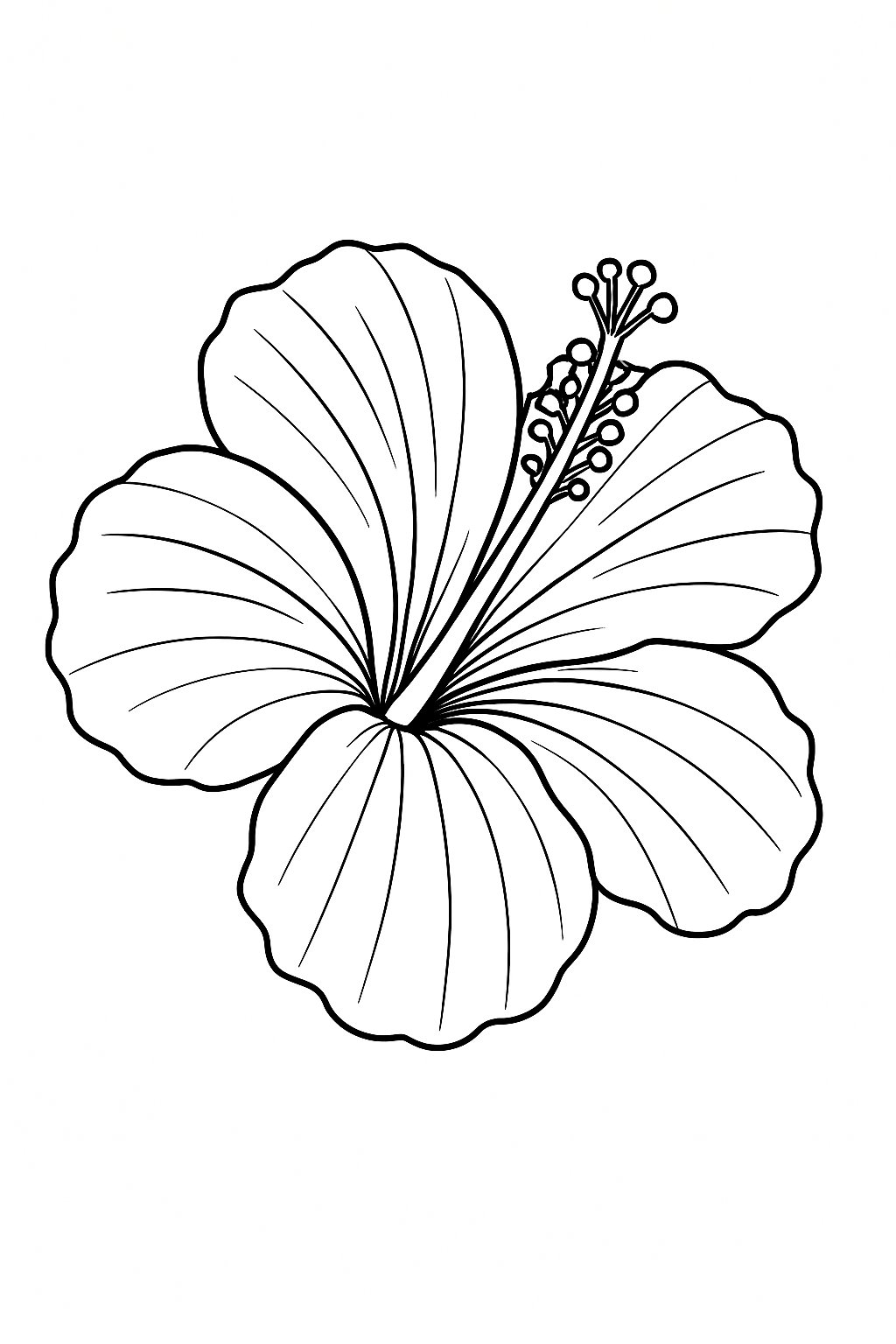
The key to a realistic hibiscus petal is capturing its soft texture and natural shape. Each petal has subtle curves and gentle folds that give the flower its characteristic look.
Colorists can focus on shading to show these details. Using lighter colors for the highlights and darker shades where petals overlap helps create depth and dimension.
The veins in hibiscus petals are thin but visible. Adding fine lines along the petals can add realism and make the flower appear more lifelike.
Hibiscus petals often have a gradient of colors, starting with a deep tone near the center and fading outward. Blending colors smoothly enhances this natural transition.
Paying attention to the edges of petals is also important. They are often slightly uneven or ruffled, not perfectly smooth.
By focusing on these small details, a hibiscus coloring page can look more realistic and vibrant while still being accessible for different skill levels.
3) Tropical Hibiscus Cluster

The tropical hibiscus cluster coloring pages often feature groups of hibiscus flowers arranged closely together. These pages show blooms in different sizes, giving a natural and lively look. The flowers usually have distinct petals and stamen details, making coloring both simple and interesting.
These clusters highlight the large, bold petals that hibiscus flowers are known for. The petals often overlap, creating a sense of depth and texture. This design is suitable for anyone who enjoys coloring floral patterns with a tropical theme.
Coloring pages with tropical hibiscus clusters can include leaves and sometimes small buds. This adds variety and makes the image more complete. The cluster style gives a chance to use multiple shades of red, pink, yellow, or orange to make the flowers more vibrant.
4) Cartoon Style Hibiscus Bloom
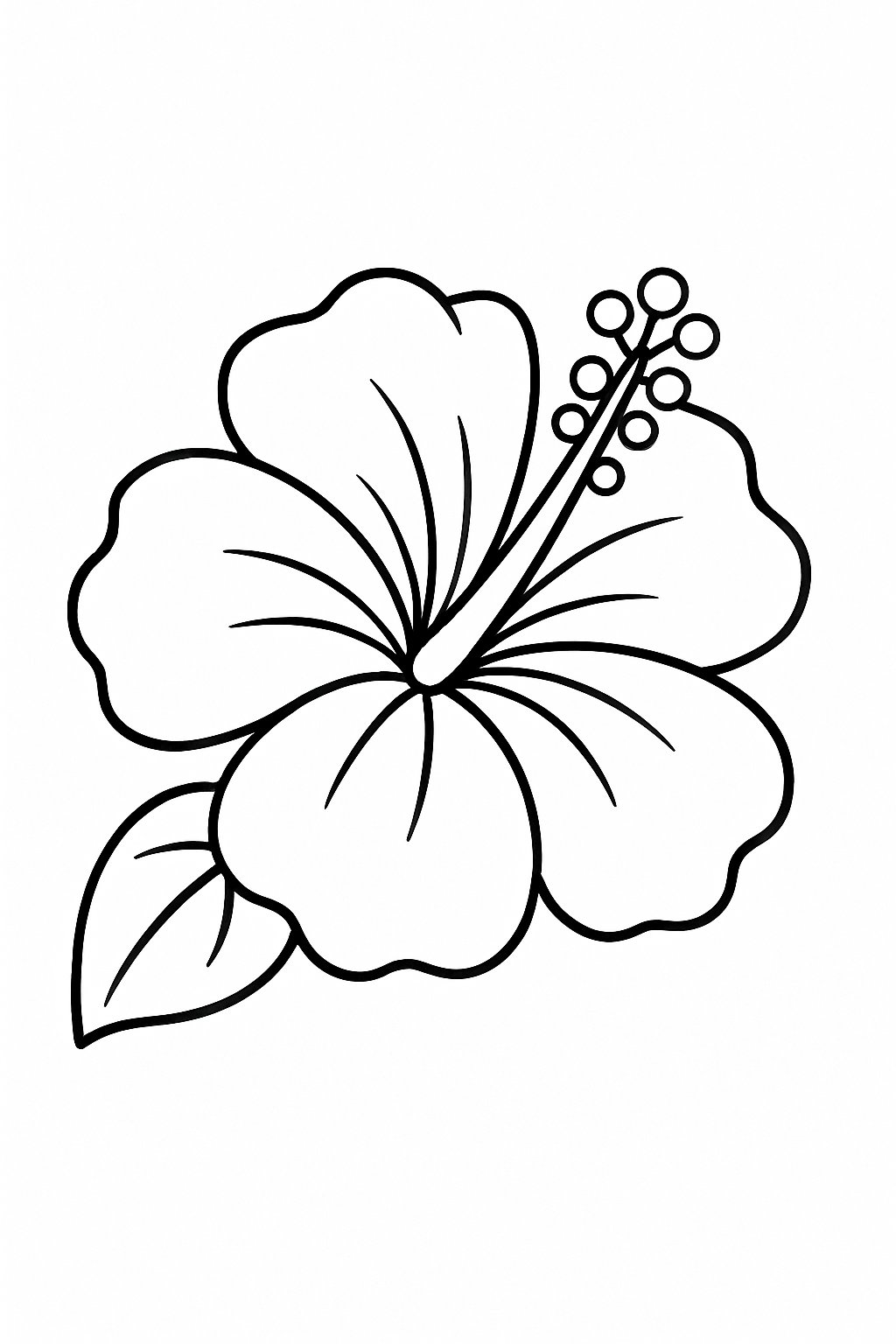
Cartoon style hibiscus flower coloring pages feature bold outlines and simple shapes. These designs make it easy for kids to color inside the lines while still having fun. The style often uses exaggerated petals and bright colors to make the flower look cheerful and engaging.
These pages are great for younger artists or beginners. They help develop fine motor skills without overwhelming details. The simplicity allows creativity to flow as colorers can choose any color they like for the petals and leaves.
Using cartoon style hibiscus pages can also be a good way to introduce flower shapes and basic art concepts. They offer a clear view of the flower structure in a playful way. This style is popular in schools and home activities for children.
5) Hibiscus with Leaves and Buds
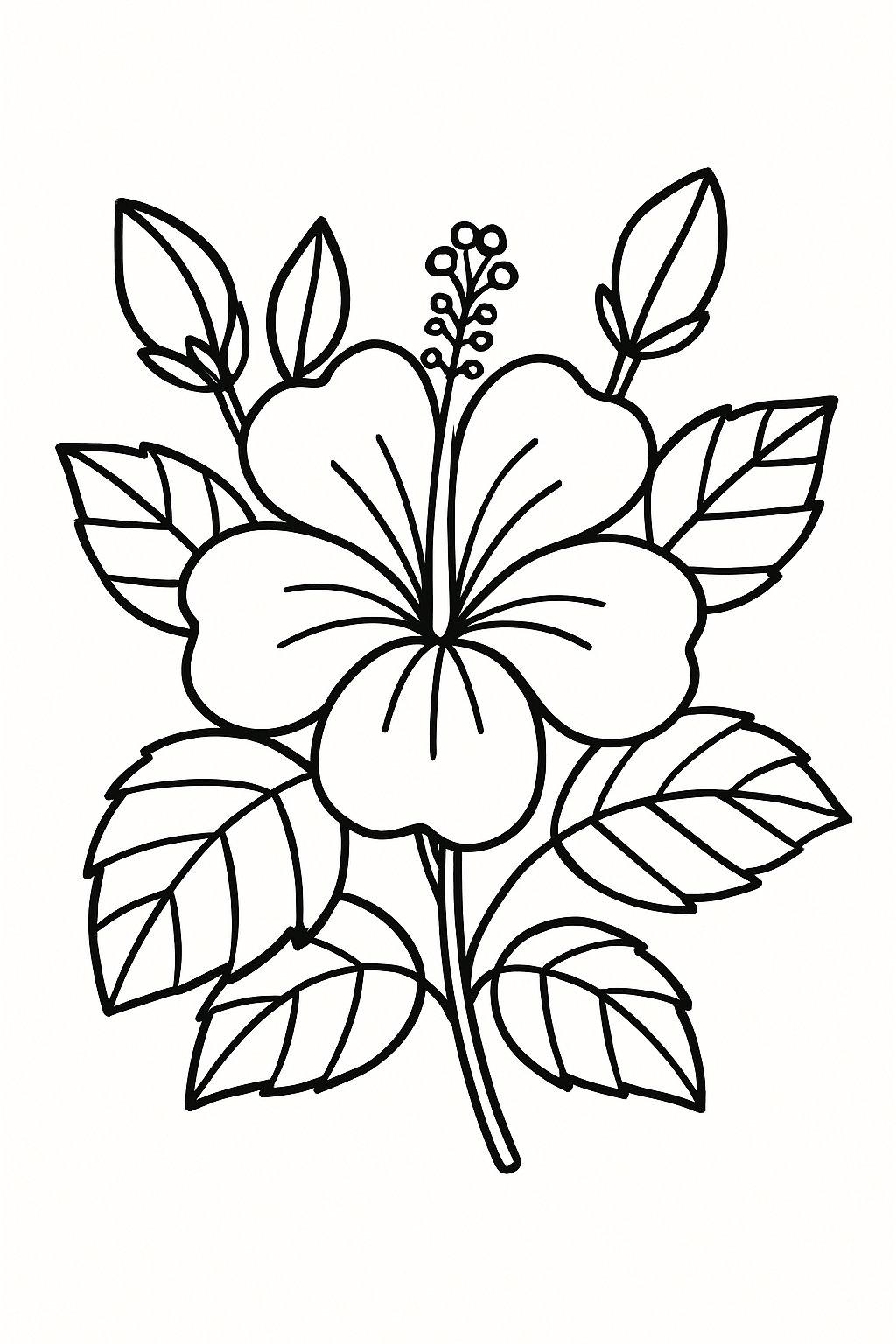
Hibiscus flower coloring pages that include leaves and buds offer more detail and variety. The leaves add texture and shape, making the picture more interesting to color. Buds show the different stages of the flower’s growth.
These pages often have clear outlines, making it easy to color small parts like veins on leaves or petals on buds. Using different shades of green for leaves and bright colors for flowers helps bring the image to life.
Including buds gives a chance to explore softer colors and smooth transitions between shades. It also shows how the flower develops before fully blooming. This detail makes the coloring page more educational and fun.
Many of these pages come in varying difficulty levels. Beginners can color simple shapes, while advanced colorists may enjoy working on intricate patterns of leaves and buds. This variety suits a wide age range.
6) Mandala Hibiscus Design

Mandala hibiscus designs combine the natural beauty of hibiscus flowers with the repeating patterns of mandalas. These designs often feature petals arranged in circles, creating a balanced and calming image. The patterns encourage focus and patience while coloring.
These pages suit both beginners and experienced colorers. Simple mandala designs use larger shapes, while more detailed ones include small, intricate patterns around the flower. This variety helps users build concentration and hand control.
Coloring mandala hibiscus pages can be relaxing. The symmetrical shapes channel attention, making it easier to unwind. The floral themes also allow exploration of bright and soft colors, often found in tropical settings.
Many printable mandala hibiscus pages are available online. They come in PDF format, making them easy to download and print. These designs often pair floral imagery with geometric patterns, enhancing the coloring experience.
7) Hibiscus in a Vase

Hibiscus flower coloring pages often include designs featuring the blooms arranged in a vase. These pages offer a simple yet elegant way to show the natural beauty of hibiscus flowers. The vase adds a structured element that balances the soft, flowing petals of the hibiscus.
Coloring hibiscus in a vase can be relaxing and creative. It allows the user to experiment with different color combinations for the flowers and the vase. Common colors for hibiscus flowers include red, pink, yellow, and white, while the vase can be colored with any style or pattern.
These pages suit a range of skill levels. Beginners may enjoy the simpler outlines, while advanced colorists can focus on shading and depth in both the hibiscus and vase. A hibiscus bouquet in a vase is also a popular choice for special occasions like birthdays or thank-you cards, making these coloring pages useful for gifts.
Benefits of Hibiscus Flower Coloring Pages

Hibiscus flower coloring pages offer a practical way to combine creativity with learning. They support relaxation while also helping children develop key skills through engaging and colorful designs.
Creative Expression and Relaxation
Coloring hibiscus flowers allows individuals to explore a wide range of colors such as red, pink, yellow, and purple. This activity encourages experimenting with shades and blending to add depth and texture to the petals. It provides a structured yet open space for artistic freedom.
Beyond creativity, coloring acts as a calming activity. It can help reduce stress and promote mindfulness by focusing attention on the simple task of coloring within lines. For adults and children alike, this floral theme supports mental relaxation and a break from screen time.
Educational Value for Children
Hibiscus coloring pages help children improve fine motor skills by practicing controlled coloring motions. Staying within outlines promotes hand-eye coordination and spatial awareness. These skills are important for writing, drawing, and other daily tasks.
The pages also introduce children to botanical concepts. They learn about flower parts, colors, and shapes while building vocabulary related to nature. Many designs range from simple outlines for beginners to detailed patterns for older kids, matching different skill levels and encouraging gradual learning.
Tips for Coloring Hibiscus Flowers
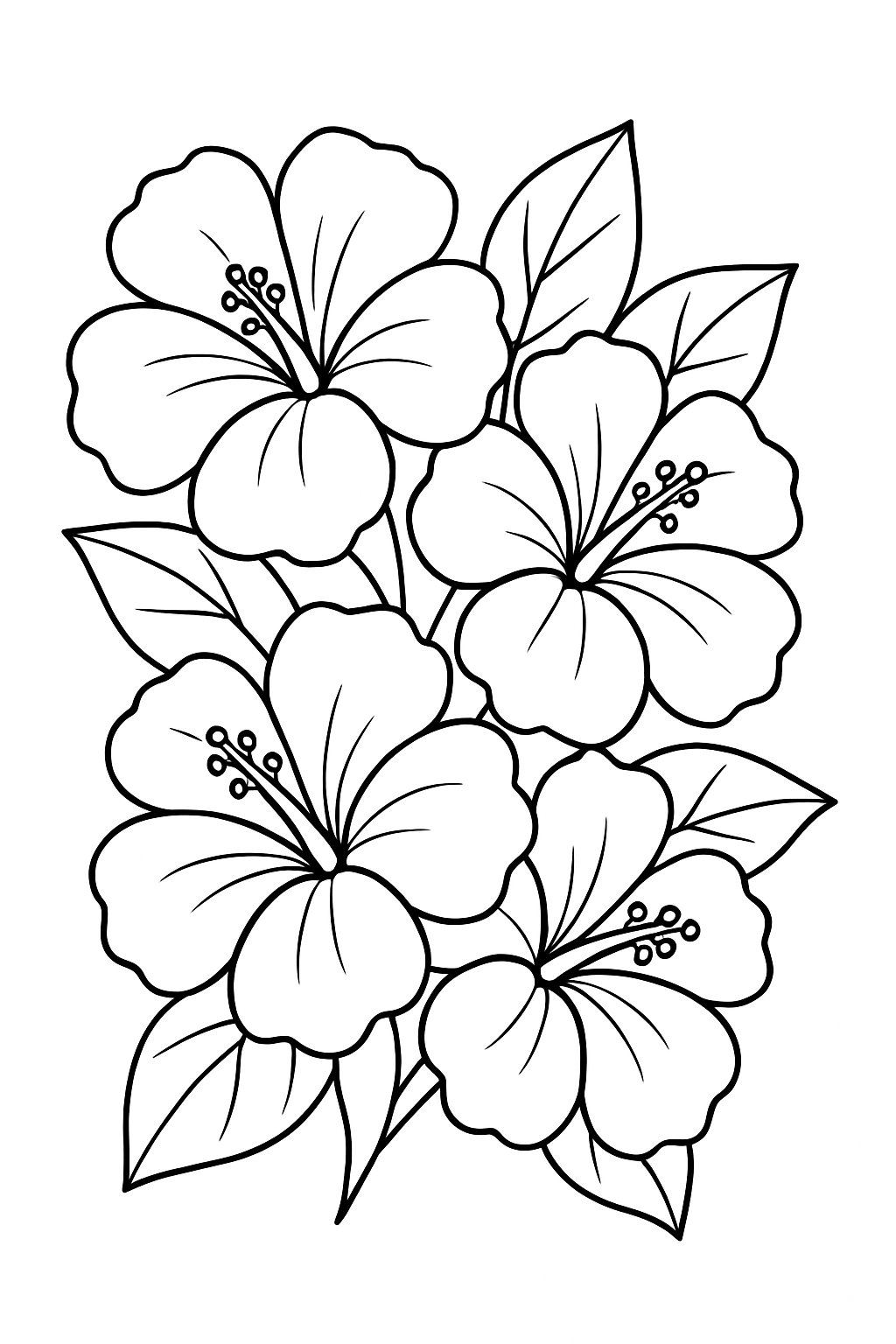
Hibiscus flowers have bright petals and delicate details that require thoughtful approaches. Using the right tools and color choices can bring out the beauty of each flower and add depth to the artwork.
Choosing the Right Coloring Materials
Selecting proper coloring materials impacts the final look of hibiscus pages. Colored pencils allow for precise shading and blending, giving control over highlights and shadows. Markers provide vivid colors but can be harder to blend smoothly.
Watercolors offer soft, natural gradients that mimic the gentle curves of hibiscus petals but need paper that handles moisture well. For beginners or kids, crayons work well to fill larger spaces easily without worrying about fine details.
It is helpful to have erasers, blending stumps, or colorless blenders to soften edges and create smooth transitions between colors.
Color Combinations to Try
Hibiscus flowers come in many natural colors, giving many options for color play. Classic choices include reds, pinks, yellows, and purples. Using lighter tones on petals’ tips and darker tones near the base adds depth.
Combining warm colors like orange and red gives a fiery effect, while mixing pink with purple offers a softer look. Greens are essential for leaves but should be varied between yellow-green and deeper forest tones for realism.
Using contrasting colors for the background, like light blue or teal, helps the flower stand out clearly on the page. Experimenting with gradients—from bright centers to shaded edges—can make the flower appear more lifelike.
Frequently Asked Questions
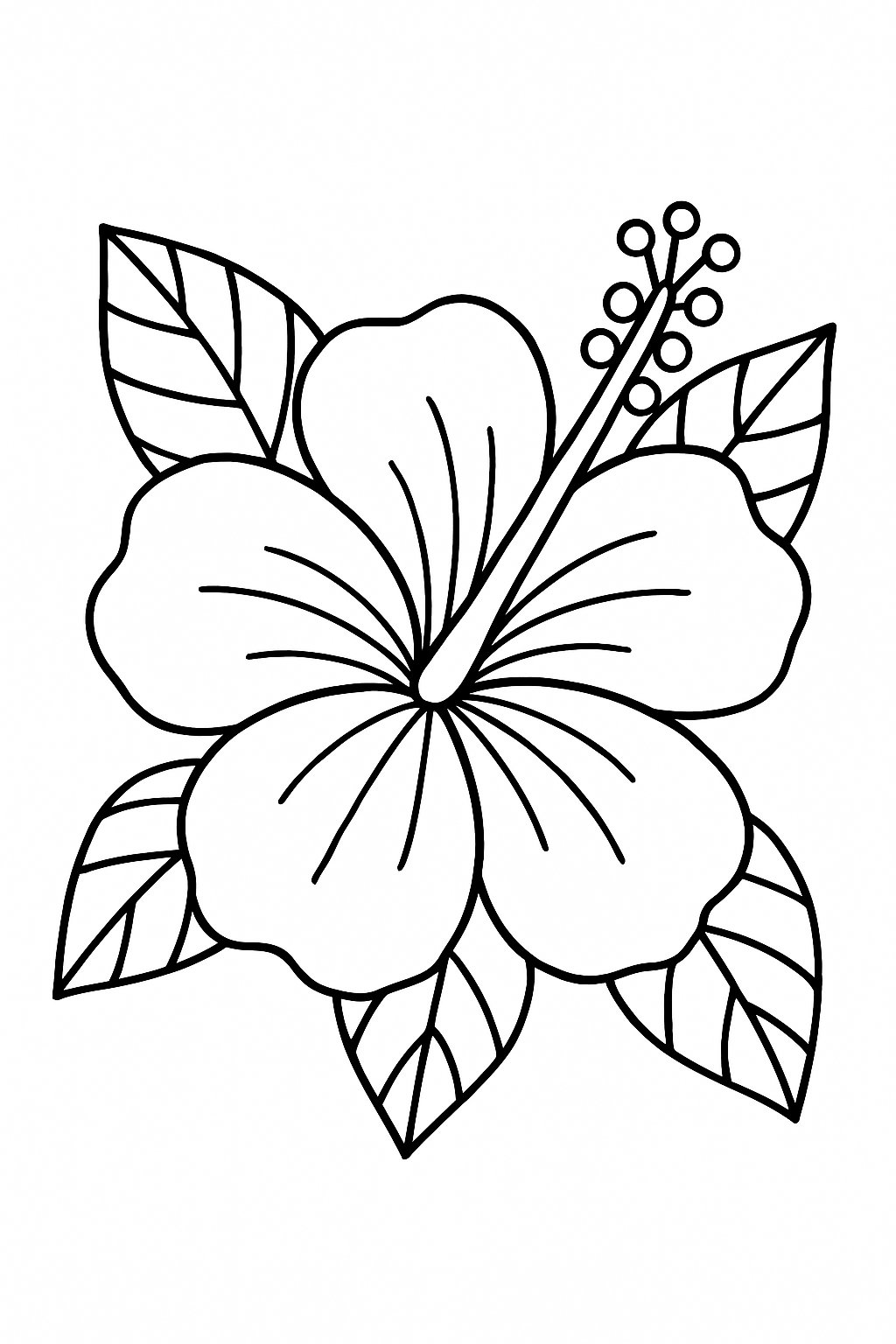
Hibiscus flower coloring pages come in different styles, including simple outlines and detailed petals. Many designs show tropical clusters or cartoon blooms, some with leaves and buds. People often want to know where to find these pages, how to download or print them, and if other flower templates are available alongside hibiscus designs.
How can I download free printable hibiscus flower coloring pages?
Free printable hibiscus coloring pages can be downloaded from various websites. Most sites offer PDF files that are easy to save and print at home. Users should look for trusted sources that provide quality images without cost.
Where can I find hibiscus flower coloring templates in PDF format?
Hibiscus templates in PDF format are available on specialized coloring sites. These PDFs range from simple to detailed designs, suitable for all skill levels. Some platforms have collections with dozens of pages ready for printing.
Are there any coloring pages featuring bouquets that include hibiscus flowers?
Yes, several designs combine hibiscus flowers with leaves, buds, or other flowers to form bouquets. These pages can vary from realistic floral clusters to stylized tropical scenes. They offer more complex coloring opportunities compared to single-flower pages.
What online resources offer a variety of flower coloring pages for free?
Websites dedicated to coloring pages often provide a wide selection of flower designs. Users can find hibiscus, lilies, roses, and other flowers all on the same platform. Many allow browsing by skill level or style, making it easy to find suitable pages.
Can I print lily and rose flower coloring pages along with hibiscus designs?
It is common for coloring sites to offer multiple flower pages in one place. People looking for both hibiscus and other flowers like lilies or roses can download them together. This allows for diverse coloring activities using various flower types.
What is the best way to print hibiscus flower templates for coloring?
Using a good quality printer with suitable paper helps achieve clear and vibrant results. Printing on thicker paper or cardstock can make coloring easier and prevent ink bleeding. Adjusting print settings to best fit the paper size ensures the designs are clear and well-sized.
